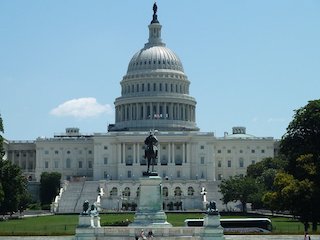Exclusive
It appears that an agreement is emerging on the broadband section of the infrastructure package in the Senate. The staff of a dozen or so Senators involved in the bipartisan infrastructure plan have met over the past two weeks and reached the outlines of an agreement.
In particular, the group seems to have coalesced around a 100 Mbps download/20 upload for the minimum build standard, which can accommodate fixed and mobile wireless, with a possible priority for projects that can achieve higher speeds, according to unnamed sources close to the wireless industry. They tell Inside Towers first that wireless can meet the speed requirements of 100/20 and will thus be eligible to apply for some $65 billion in subsidies; they also provided Inside Towers with documentation to back up their claims.
Previously, much of the infrastructure language being discussed by lawmakers favored wireline connectivity, and symmetrical upload and download speeds such as 100 Mbps, Inside Towers reported. By setting a symmetrical 100/100 speed requirement, wireless would have been cut out of that money, according to the sources.
WIA has been championing wireless on the Hill. WIA President/CEO Jonathan Adelstein recently urged lawmakers not to limit the funding eligibility to a single technology. By making wired connectivity a priority, “you could be hamstringing your ability to use other technology,” like wireless, he said at a June 22 Senate hearing. He noted that wireless networks have advantages, especially in restoration time after a disaster. Wireless communications can be restored more quickly in some cases than wireline, he testified.
In a June interview, Adelstein characterized the $65 billion infrastructure deployment subsidies as “real money” for the wireless industry.
According to the latest agreement, eligible service areas are focused where not less than 80 percent lack reliable broadband service of at least 25/3 Mbps. Asked how WIA seems to have turned around lawmakers, the sources told Inside Towers wireless lobbyists have been bending Senators’ ears, preaching technological flexibility for months. They alluded to Adelstein’s June 22 testimony before the Senate Commerce Committee as “making several very important arguments that challenged their thinking in a way that hadn’t happened previously.”
In a statement for Inside Towers yesterday, Adelstein said: “We are thrilled to hear reports that our message is getting through to Congress that it needs to adopt a flexible all-of-the-above plan employing all broadband technologies, including fixed and mobile wireless, along with fiber. We’ve come a long way in the policy debate from just a few weeks ago when many believed fiber-only was inevitable, to potentially being close to a bipartisan deal that recognizes a central role for wireless infrastructure.”
He said the recent hearing at which he testified could not have happened at a better time and place than in the Senate. It occurred “just as staff was about to sit down and write up the details. We’ve seen a real turnaround since we were able to make the strong case for wireless. If the outlines of the deal being reported so far hold together, wireless is ready and able to deploy broadband quickly to unserved areas of rural America.”
Senators plan to meet over the next few days to work out any outstanding issues, such as which agency would oversee distribution of some $40 billion in broadband funding to states — the FCC or NTIA. It remains unclear when the Senate would bring up the measure for a floor vote.
By Leslie Stimson Inside Towers Washington Bureau Chief





Reader Interactions